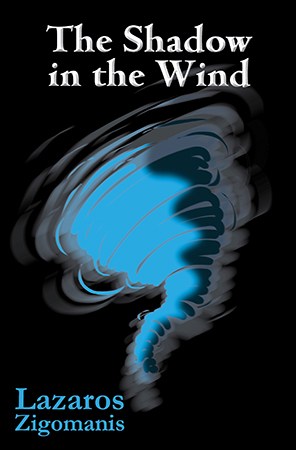The Next Work: Part II
After I’ve finished a manuscript, I’ll usually reread it several times, fleshing it out while the story’s still fresh. When I no longer think I’m getting anything meaningful out of it, I print it out and give it to my alpha readers. I’ll then incorporate their feedback and go over and over it again until I’m back at the stage I think I can do no more. Then I’ll sit on it.
I’ve sat on ‘Prudence’ for almost five years.
That length of time is unusual. Other things have taken up my time. Pride, Just Another Week in Suburbia, and August Falling were all published in the interim, and each required structural revisions. In the case of Pride, it was like writing the book from scratch. I’ve also worked on screenplays. And several other (unpublished) manuscripts. I have a list of TO-DO things in my phone about what needs to be revised. I just need to find the time to do them.
The problem is stuff comes up unexpectedly. Given my age and the extent of my rejections, I’d come to a point in my life that I simply accepted whatever came next, which means I didn’t actually expect to be published – or yearn for it the way I did a decade ago. That’s not to say I don’t enjoy it and love my publishers, but I never expected publication would pop up, and claim my time with editing. Previously, I was always able to fit in writing something new while revising what I’d just finished. Then there was those damn manuscripts I had to give just one last look for the one hundredth time.
Anyway, with ‘Prudence’ finished and now hibernating, I decided to move onto my cancer story, which had been tentatively titled ‘Shadow and Hope’. As usual, I mapped out all the characters. The protagonist was a six-year-old boy named ‘Keene’ – the name means ‘proud/brave’. It fit him for what he was going to do. He has a black and white Border Collie, Bunch. Keene’s mum is suffering cancer, and his father has grown so preoccupied with her illness and keeping the household running that Keene frequently gets shut out.
Keene goes on an adventure that he thinks will help heal his mum. In theory, I thought this book would be an easier one to write than any of my previous others. Keene wasn’t like Casper or August, who had to deal with internal shit and try to find their place in the world; or like Luke from Pride, who didn’t realise he was caught in a mystery that slowly unravelled around him. Those stories didn’t have straight-line objectives. Keene was on a quest. He had to go from here to there, and back again. I even drew up a map.
And then I struggled like I never had before.
Part of the reason was the foreshadowing of what I wanted to happen. I constantly was going over the first few chapters, trying to get them to work so I could build the rest of the story. Ultimately, I ditched about 9,000 words and started over.
Another issue is that my other characters had friends, family, and workplaces to bounce off. That stimulated both conversation and circumstances. Because of that, the stories developed organically. Keene didn’t have such luck once he started on his adventure. He was with his dog, Bunch. Keene could play off him, but not too much. Also, Bunch didn’t exactly stimulate diversity. He followed Keene, wanted biscuits, and loped around, (possibly) never understanding the importance of the journey.
 What surprised me most is how grossly I underestimated how big this story would be. I believed it would be a book. Usually, I have a good idea how long something will be. I’ve only gotten it magnificently wrong on three occasions: I had a short story I thought would be 3,000 words that became 10,000 words, I thought this would be a novel but it was only 22,000 words, and with my work-in-progress I believed I might struggle to hit 80,000 words (like my previous novels) but it became substantially bigger.
What surprised me most is how grossly I underestimated how big this story would be. I believed it would be a book. Usually, I have a good idea how long something will be. I’ve only gotten it magnificently wrong on three occasions: I had a short story I thought would be 3,000 words that became 10,000 words, I thought this would be a novel but it was only 22,000 words, and with my work-in-progress I believed I might struggle to hit 80,000 words (like my previous novels) but it became substantially bigger.
I went through my usual process with ‘Shadow and Hope’, then submitted it to the handful of markets that looked at novellas – off the top of my head, it was to three publishers, and to three competitions .
As far one of the competitions went, it got a glowing rejection. It was also a semi-finalist in the 2017 Screencraft Cinematic Short Story Contest, and the adapted screenplay a semi-finalist in the 2017 Screencraft Family-Friendly Screenplay Contest. Unfortunately, some idiot didn’t read the fine print about resubmitting if you made the semi-finals and including a cover letter. (Equally unfortunately, that idiot is me.)
No luck at all with the publishers. Not a lot of publishers consider novellas nowadays, which is a shame, because it’s a great size to read. And there’s lots of fantastic novellas you probably don’t even realise are novellas, e.g. Albert Camus’s The Stranger, John Steinbeck’s Of Mice and Men, George Orwell’s Animal Farm. Look up novellas and you’ll find an awesome reading list.
As with Pride, though, I’m glad that ‘Shadow’ wasn’t picked up, because the longer the story has stayed with me, the more it’s gestated and evolved. It’s one of those stories I keep going back to. In the revisions, it became rechristened as The Shadow in the Wind. Also, I started having ideas to periodically revisit Keene at different stages of his life, and carry over the greater arc of the story.
Not long ago I was going to submit The Shadow in the Wind to a publisher, until I saw what they offered in terms of publication. This is not intended to denigrate their terms – you’re not going to expect much for the publication of a form that’s not that popular or that widespread nowadays. What they were offering was fair enough. But looking at it, and given the resources I have at my disposal, I thought, Well, I’m just going to do it myself.
Which is what I’ve done for the most part. I did retain professionals where required: Kev Howlett for the cover image, Blaise van Hecke to put the cover together, and Blaise van Hecke and Laura McCluskey to edit, and Sam Stevens, Alyse Clarke, and Tara Cairnduff to proof. And, of course, being YA it’s under my YA moniker of ‘Lazaros Zigomanis’.
The Shadow in the Wind will be available imminently through Busybird Publishing’s imprint Pinion Press.
